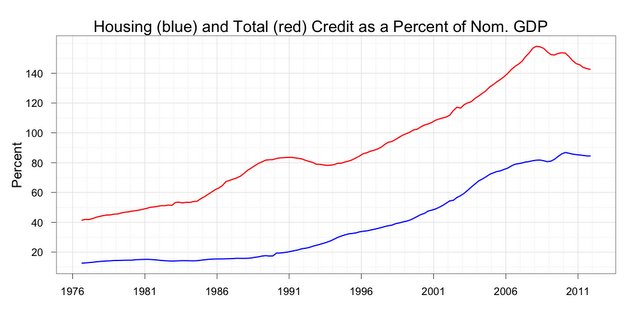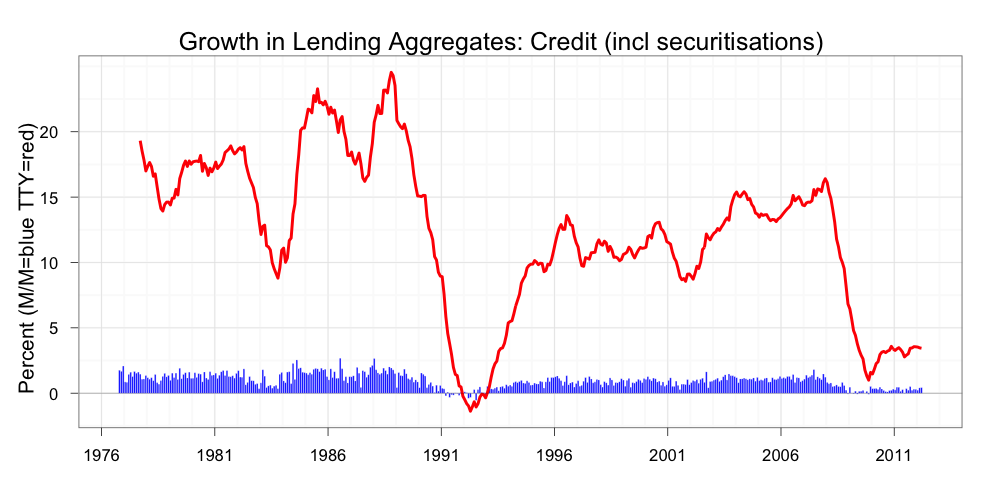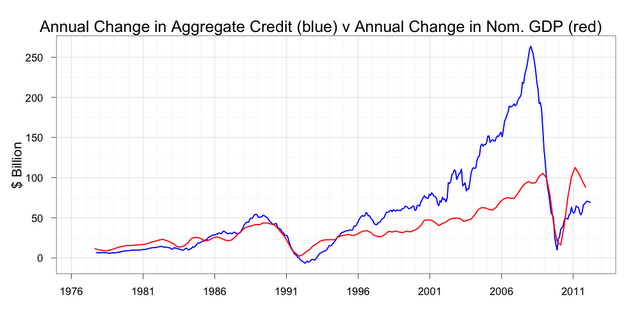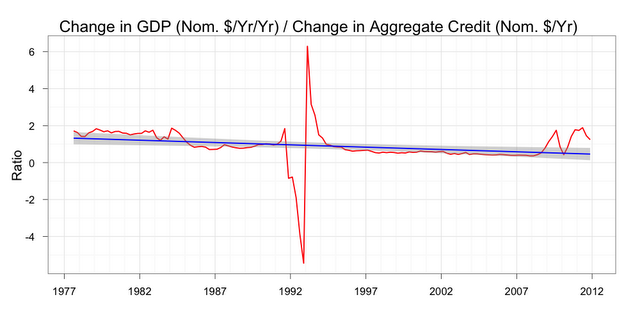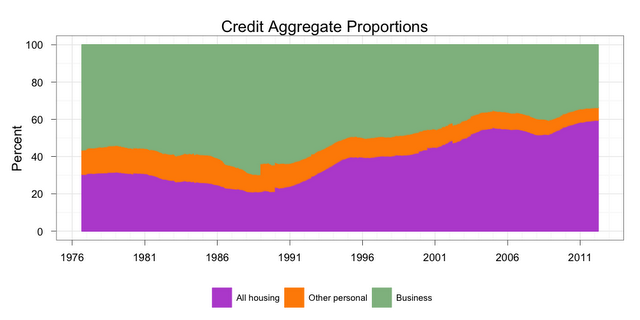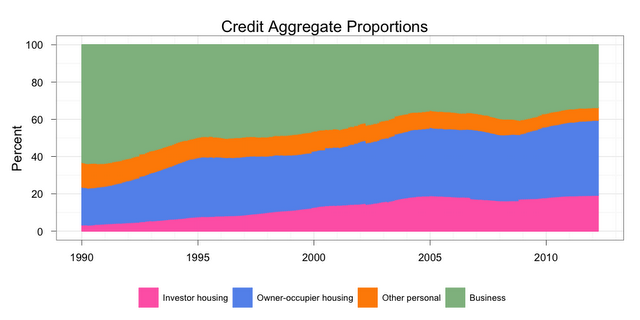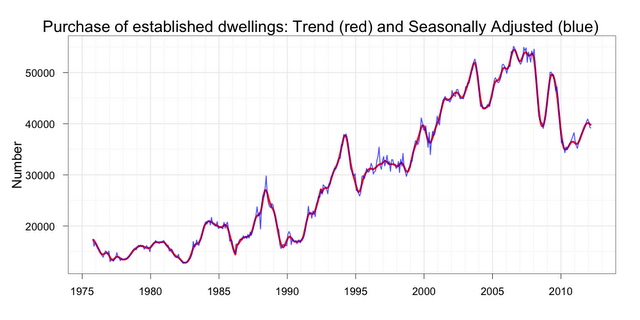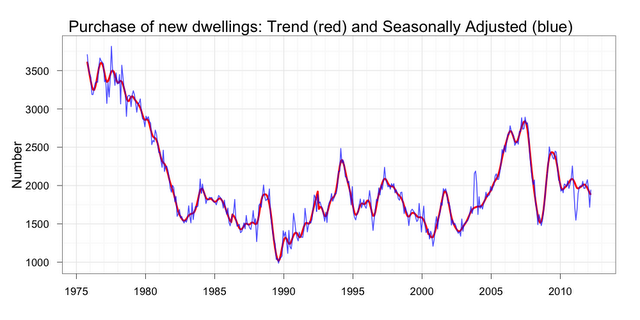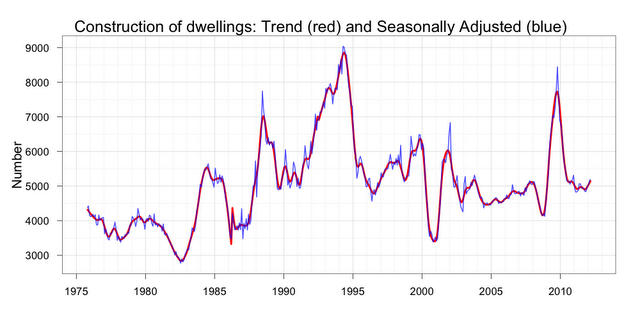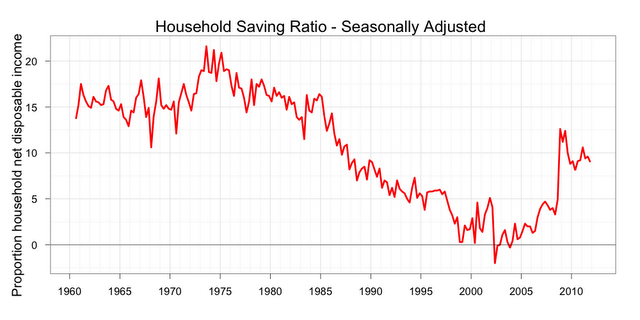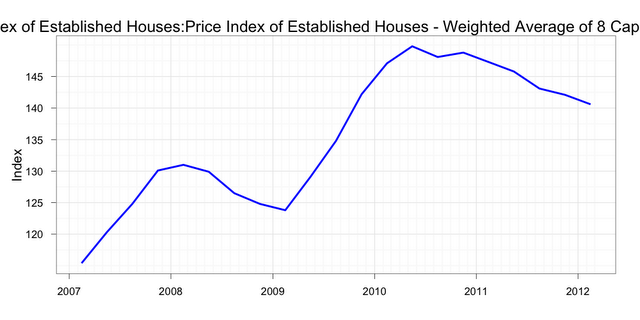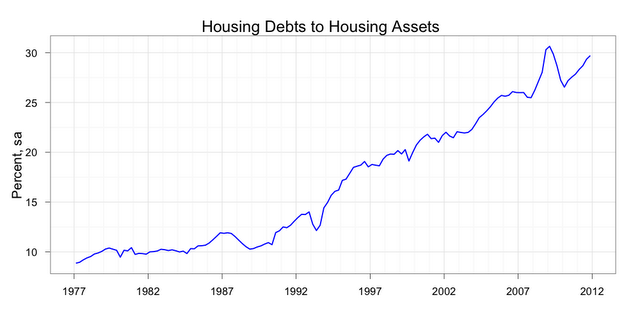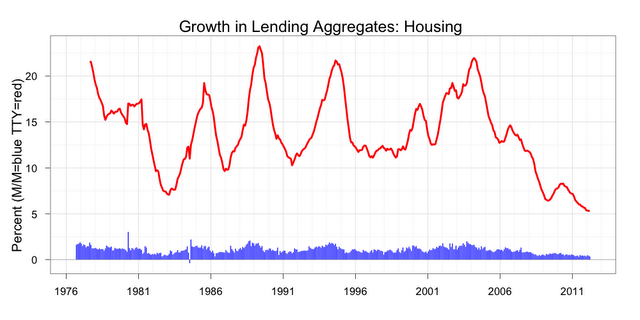Cross-posted from Mark the Graph.
Most people who come here will be familiar with the Australian private sector debt story over the past 35 years. Since Q4-1976, private sector debt has risen from a touch over 40 per cent of nominal GDP. It peaked with the onset of the Great Recession at around 155 per cent and is currently a touch over 140 per cent.
Nominal credit growth ran at between 15 and 20 per cent prior to the early 1990s recession. It ran between 10 and 15 per cent prior to the Great Recession.
Of concern is the productivity of that debt. The next chart looks at the annual change in credit and compares it with the annual change in nominal GDP.
While this comparison (a flow compared with an acceleration) is problematic; we can divide the two lines to find out what an extra dollar in debt contributed in terms of the change in GDP – a measure of productivity.
In the late 1970s an extra dollar in private debt delivered around $1.80 in GDP growth. In the period immediately prior to the Great Recession (what Australians call the global financial crisis) an extra dollar in debt was giving us around 40 cents more in GDP – not the best return on investment.
Why was our debt becoming increasing non-productive over time? It’s a good question and I am not sure I know the answer. But my suspicion is that over time our debt was increasingly being used to finance non-productive housing asset acquisition. Business as a proportion of our aggregate credit shrunk, while housing grew.
The ABS housing finance data suggests a compositional change that would have also impacted on credit productivity – a substantial increase in borrowings to purchase established dwellings, combined with a decline in the purchase of new dwellings and a long period of little growth in the construction of dwellings. Of note, the purchase of existing dwellings is not counted in GDP: it is not an addition to national output.
The thing that intrigues me is those people who hope for a cut in interest rates to restart the housing boom (in the hope this will boost the economy). I am not convinced. Australia is undergoing a structural change. We are saving more – and this propensity to save appears entrenched.
House prices are falling (some argue they were well over-valued). Apologies on the heading for the next chart – it is the index for established houses over 8 capital cities.
In part at least, because of the fall in house prices, the debt to assets ratio continues to rise.
For these reasons, I am not convinced we will see a return to burgeoning housing credit growth, even with more cuts in official interest rates.

